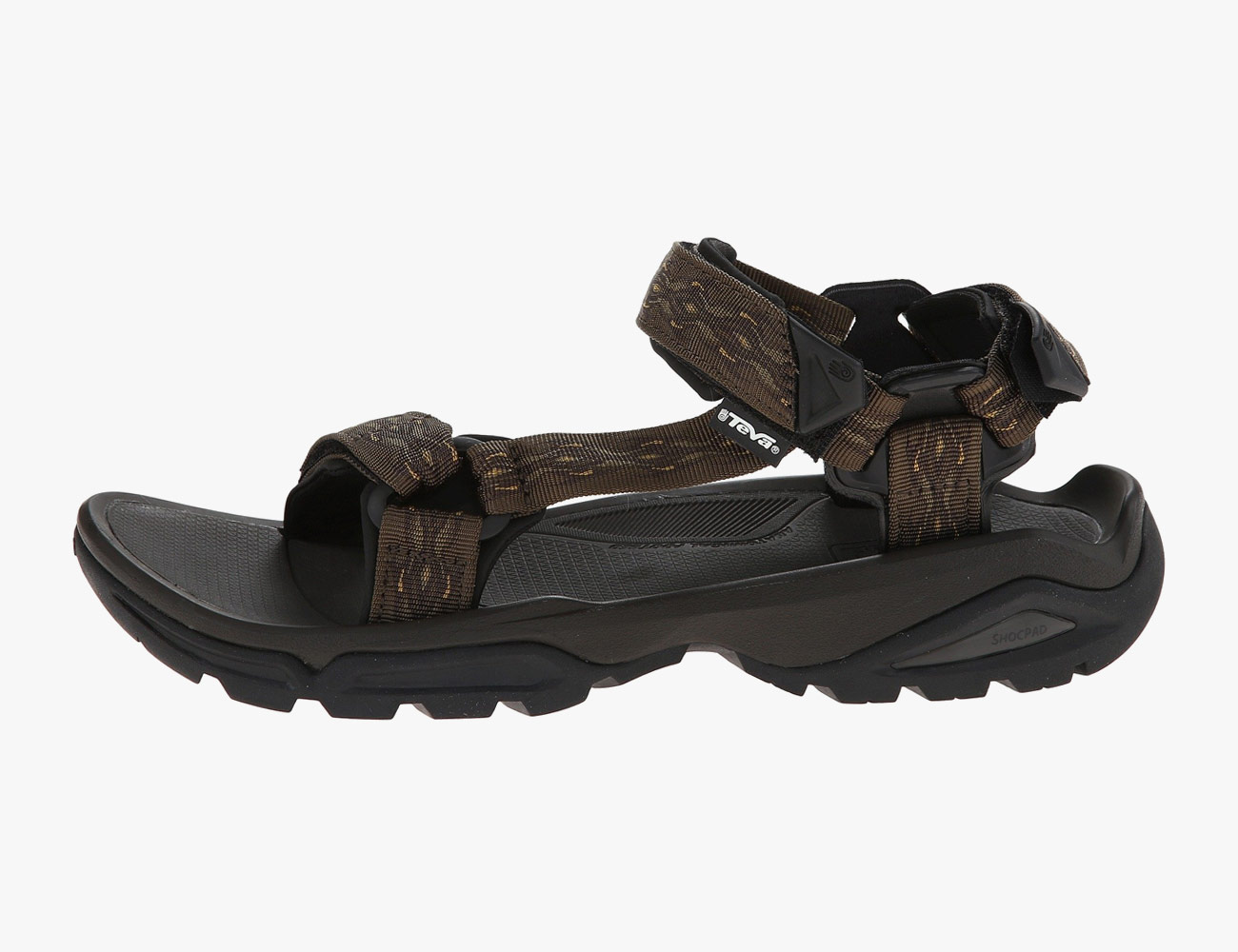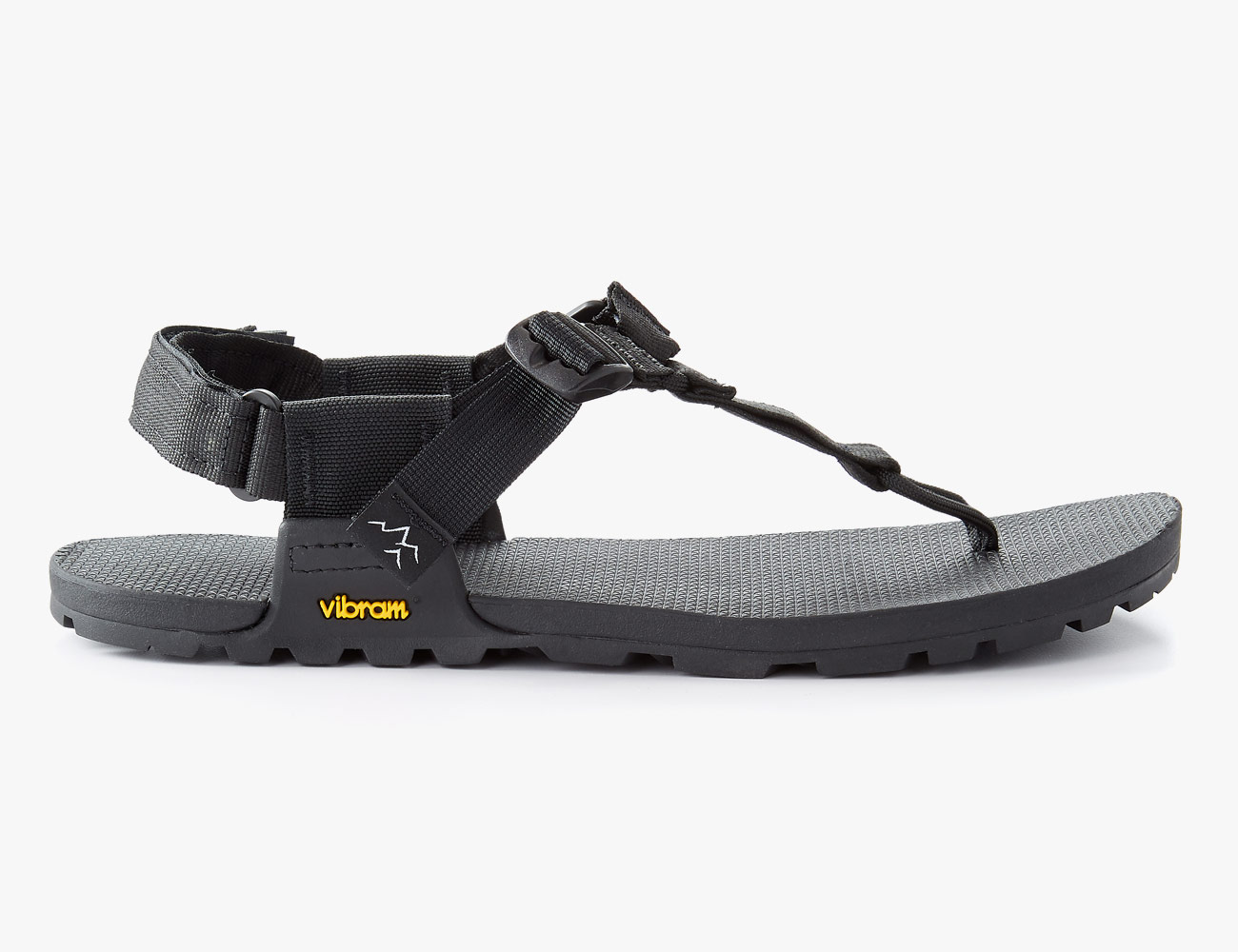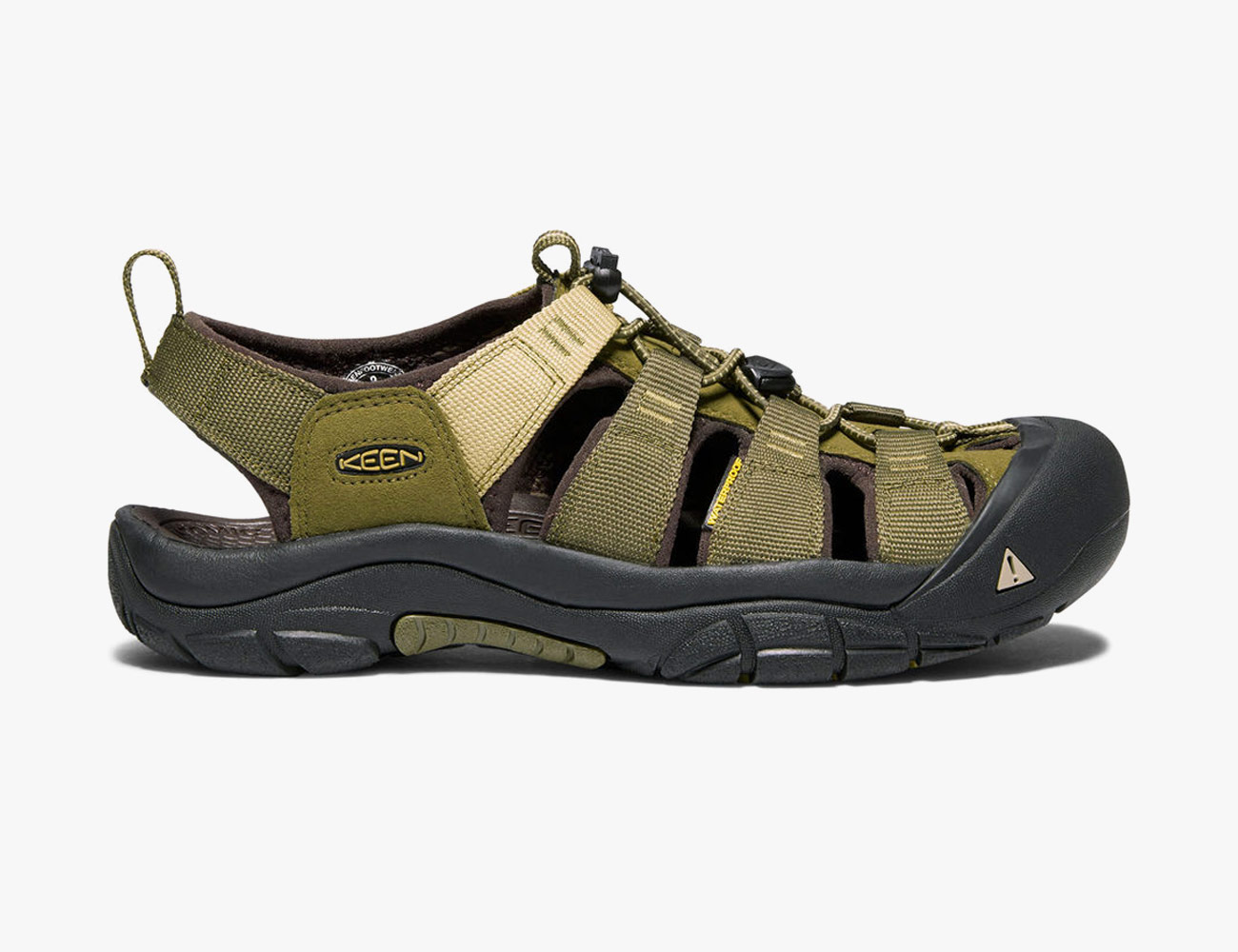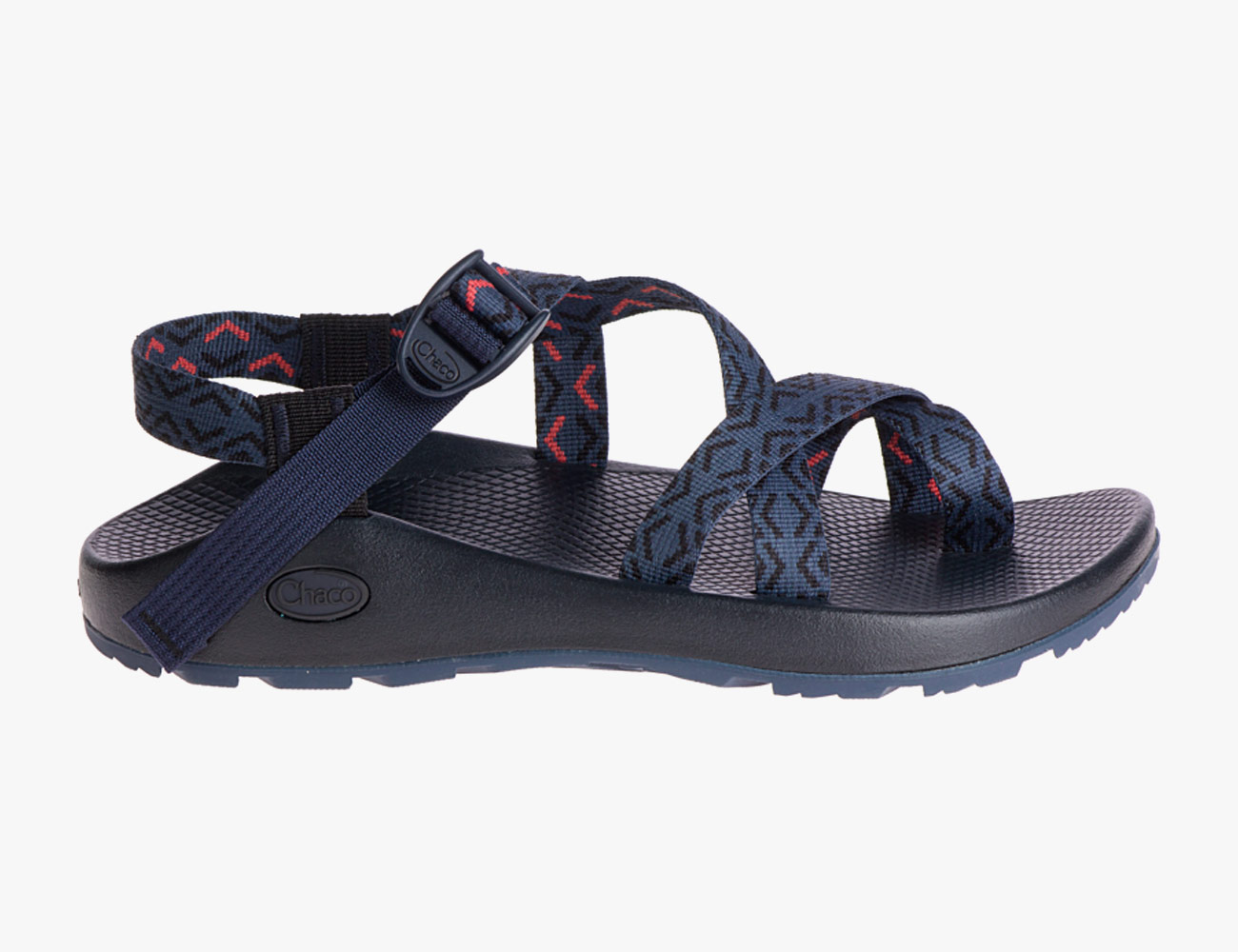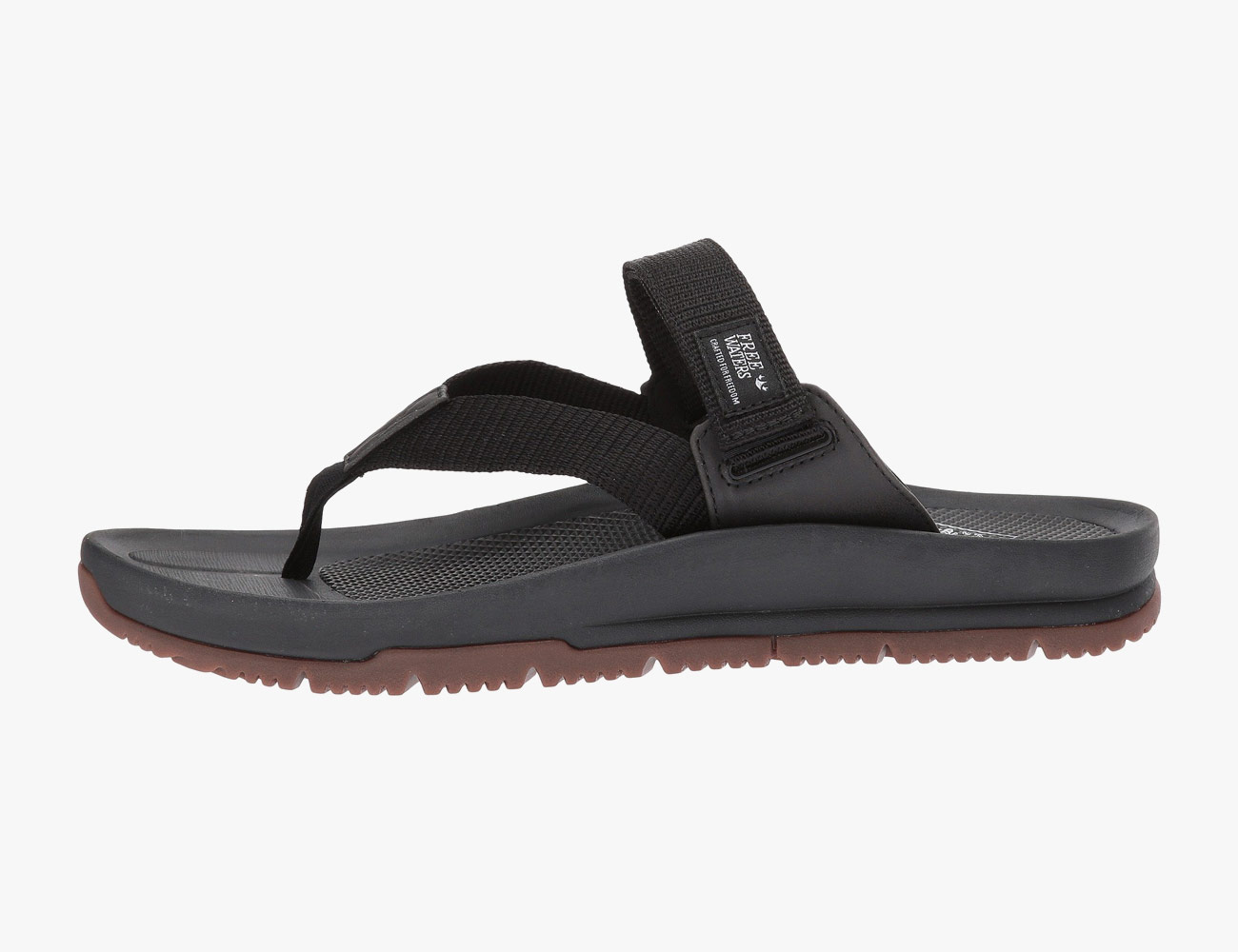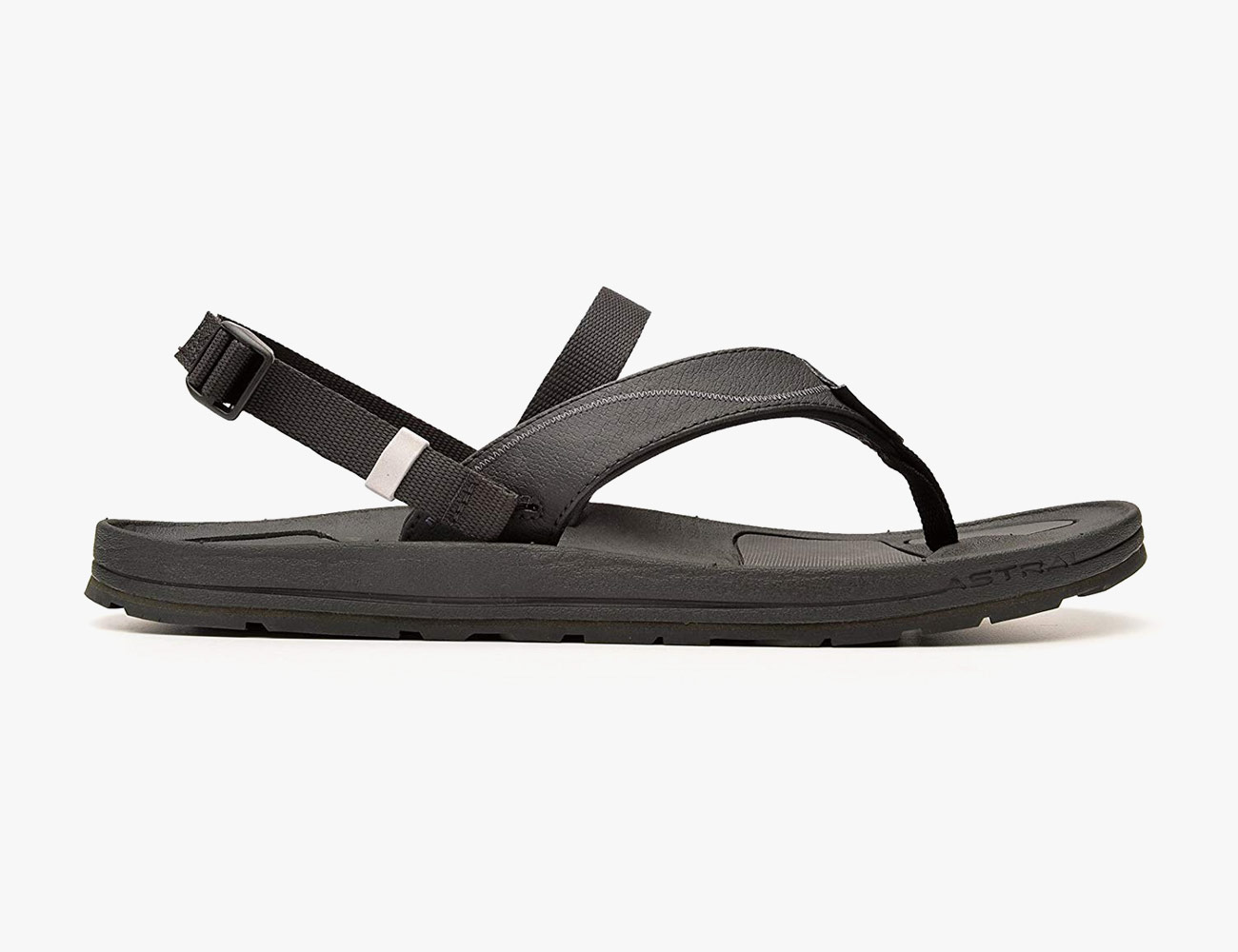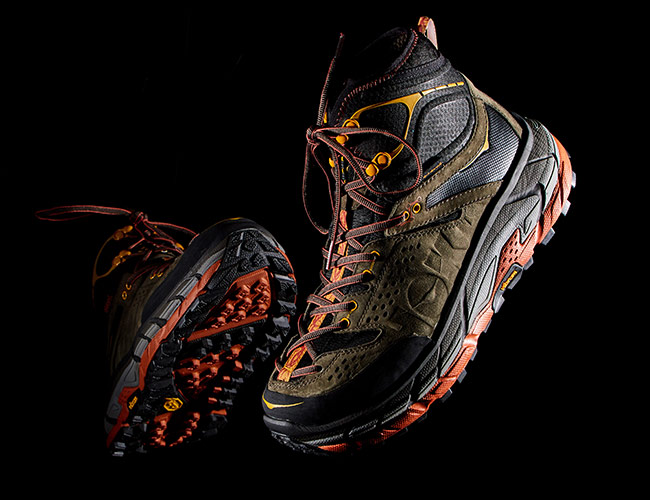A lot is implied by the word “sandal”. Upon hearing it, one might conjure up an image of footwear made of leather and cork loosely affixed to a pair of worn feet stemming from a guitar-toting, shower-adverse long-haired hippy. That picture would stereotype both man and shoe though.
Sandals have their place outside of cultural generalizations; in rafts, for one. Teva, one of the most highly-regarded makers of outdoor sandals, got its start in 1984 when Mark Thatcher, a river guide in the Grand Canyon, used two Velcro watch straps to modify a pair of flip-flops so that they wouldn’t come off of his feet.
The outdoor sandals available today are more robust than that — in fact, they’re about as beefy as can be without losing the light and open qualities that make them great in the first place. Sticky rubber soles with heavy lugs, platforms molded for arch support and anti-blister constructions are just some of the traits that make the best outdoor sandals suitable for use beyond boats and water. Hike in them, bike in them, climb in them — these sandals are built to go everywhere.
Teva Terra Fi 4
Tevas are the classic outdoor sandals, and the Terra Fi 4 model is akin to the original many of us remember from childhood, but with a few crucial upgrades that make it great for all-around outdoor use. For one, it features a molded midsole with a nylon shank for extra support on uneven ground as well as a sticky rubber outsole. But the Terra Fi 4 also has additional padding supporting points of high abrasion, a cushioned shock absorber at the heel and a zinc-based antimicrobial treatment that keeps them from developing sandal stink.
Bedrock Sandals Cairn 3D
Bedrock thought that even traditional sandals were too constraining, so it redesigned the strap layout into a design that’s something of a hybrid between a flip-flop and Tevas. The paracord thong uses an aluminum insert instead of the very-breakable plug design found on normal flip-flops, and an adjustable heel cuff that provides rear foot stability. The Cairn 3D features a contoured footbed for additional comfort and a Vibram outsole for the best possible grip. If it looks too minimal for long adventures, know that it isn’t — the company’s chief experience officer, Naresh Kumar, hiked New Zealand’s 3,000 kilometer Te Araroa trail in a pair.
Keen Newport Hydro
Many of Keen’s sandals walk a fine line between sandal and shoe, and the Newport Hydro does it expertly. It’s open everywhere except the toe, which makes it perfect for wear during water activities when underwater rocks can become especially hazardous to toes. Its washable webbing exterior is backed with a comfy PFC-free, quick-drying lining. The sole has tread enough for hiking on dry land too and is supported by a light shank for additional support.
Chaco Z2 Classic
Chaco’s most iconic sandal is also one of the most polarizing, largely due to the unique loop that helps secure the big toe. People either hate it or love it; we find that it provides the extra bit of leverage that’s useful when scrambling up trails and over rocks. (If you really don’t like it, there’s a toe-less version too.) The sandal is simple in build — it’s composed of only eight parts — but is podiatrist-approved for its super supportive sole. That sole may be a bit chunky, but it’s also capable for use on even long-haul treks.
Freewaters Trifecta
Flip-flops are great for casual wear but, for all their wonderful qualities, are not great outdoor sandals; they’re too minimal, and often quite breakable. But leaving the heel free to breath is nice (and prevents abrasion to one of the foot’s most blister-prone areas). Freewaters approached the zero-sum situation by axing the heel piece and leaving a Velcro strap over the top of the foot. It also included a soft foam platform and a supportive arch, both of which help this flip-flop mutant roam much farther than the sidewalk or the beach.
Astral Filipe
Astral’s take on the flip-flop uses a smart hybrid design that allows wearers to choose whether they want additional support. At the base of the main straps are two notches that allow for the insertion of a supplementary piece of webbing that runs across the heel and over the top of the foot. This makes the Felipe more secure for its intended in-water use — think rafting, canoeing, kayaking and swimming — but also makes it a safe bet for light hiking too.
Unlike concrete sidewalks and gravel paths, the trail calls for hardened and supportive footwear to combat dirt, mud, jagged rocks and streams. The answer is hiking boots and hiking shoes, and these are the best available. Read the Story

